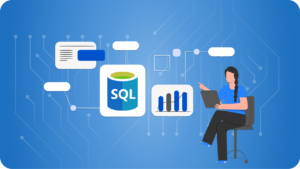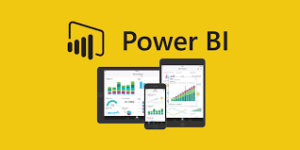DATA ANALYTICS
Data analytics is the process of analyzing data to make informed decisions. It involves collecting, transforming, and analyzing data to find patterns, draw conclusions, and make predictions.
Types of data analytics:
- Descriptive analytics: Analyzes past data to understand what has happened.
- Diagnostic analytics: Analyzes data to understand why events, behaviors, and outcomes happened.
- Predictive analytics: Uses historical data to predict future outcomes.
- Prescriptive analytics: Uses data to recommend a course of action or strategy.
How data analytics is used Data analytics can help improve business processes, It can help shape business growth, It can help improve decision-making, and It can help solve problems.
Tools used in data analytics: Spreadsheets, Business intelligence platforms, and Structured query language (SQL) tools.
Skills required for data analytics Working with IT tools and systems, Statistical and computational techniques, and Basic coding.
Data analytics can be used in many industries, including healthcare, finance, and marketing.
Techniques used in data analytics
- Statistical analysis: To analyze past and current data
- Machine learning: To find meaningful patterns in data
- Data visualization: To present data clearly using charts, graphs, and tables
- Data mining: To extract usable data from large datasets
- Data modeling: To diagram data flows
EXCEL and VBA

Visual Basic for Applications (VBA) is a programming language that extends the capabilities of Microsoft Excel. It can be used to automate tasks, create custom functions, and enhance data analysis.
What can VBA do in Excel?
- Automate repetitive tasks
- Create custom functions
- Analyze large datasets
- Create complex financial models
- Generate custom forms
- Build tools that don’t exist in Excel
How do I access VBA in Excel? Open the VBA editor by pressing Alt + F11, Record macros, and Write code directly.
Who uses VBA?
- Financial analysts use VBA to design and work with complex models for risk management, trading, and pricing
- Professionals who need to streamline processes and enhance Excel’s capabilities
Learning VBA
- VBA is considered a beginner-friendly language
- The VBA community has many resources available for individuals who are new to programming
For more details please click on the link below.
SQL

SQL is a standard language for accessing and manipulating databases.
What is SQL?
- SQL stands for Structured Query Language
- SQL lets you access and manipulate databases
- SQL became a standard of the American National Standards Institute (ANSI) in 1986, and of the International Organization for Standardization (ISO) in 1987
What Can SQL do?
- SQL can execute queries against a database
- SQL can retrieve data from a database
- SQL can insert records in a database
- SQL can update records in a database
- SQL can delete records from a database
- SQL can create new databases
- SQL can create new tables in a database
- SQL can create stored procedures in a database
- SQL can create views in a database
- SQL can set permissions on tables, procedures, and views
Although SQL is an ANSI/ISO standard, there are different versions of the SQL language.
However, to be compliant with the ANSI standard, they all support at least the major commands (such as SELECT, UPDATE, DELETE, INSERT, WHERE) in a similar manner.
Note: Most of the SQL database programs also have their own proprietary extensions in addition to the SQL standard!
Using SQL in Your Web Site
To build a web site that shows data from a database, you will need:
- An RDBMS database program (i.e. MS Access, SQL Server, MySQL)
- To use a server-side scripting language, like PHP or ASP
- To use SQL to get the data you want
- To use HTML / CSS to style the page
RDBMS
RDBMS stands for Relational Database Management System.
RDBMS is the basis for SQL, and for all modern database systems such as MS SQL Server, IBM DB2, Oracle, MySQL, and Microsoft Access.
The data in RDBMS is stored in database objects called tables. A table is a collection of related data entries and it consists of columns and rows.
Every table is broken up into smaller entities called fields. The fields in the Customers table consist of CustomerID, CustomerName, ContactName, Address, City, PostalCode and Country. A field is a column in a table that is designed to maintain specific information about every record in the table.
A record, also called a row, is each individual entry that exists in a table. For example, there are 91 records in the above Customers table. A record is a horizontal entity in a table.
A column is a vertical entity in a table that contains all information associated with a specific field in a table.
For more details please click on the link below.
PYTHON

Python is a popular programming language. It was created by Guido van Rossum, and released in 1991.
It is used for:
- web development (server-side),
- software development,
- mathematics,
- system scripting.
What can Python do?
- Python can be used on a server to create web applications.
- Python can be used alongside software to create workflows.
- Python can connect to database systems. It can also read and modify files.
- Python can be used to handle big data and perform complex mathematics.
- Python can be used for rapid prototyping, or for production-ready software development.
Why Python?
- Python works on different platforms (Windows, Mac, Linux, Raspberry Pi, etc).
- Python has a simple syntax similar to the English language.
- Python has syntax that allows developers to write programs with fewer lines than some other programming languages.
- Python runs on an interpreter system, meaning that code can be executed as soon as it is written. This means that prototyping can be very quick.
- Python can be treated in a procedural way, an object-oriented way or a functional way.
Good to know
- The most recent major version of Python is Python 3, which we shall be using in this tutorial. However, Python 2, although not being updated with anything other than security updates, is still quite popular.
- In this tutorial Python will be written in a text editor. It is possible to write Python in an Integrated Development Environment, such as Thonny, Pycharm, Netbeans or Eclipse which are particularly useful when managing larger collections of Python files.
Python Syntax compared to other programming languages
- Python was designed for readability, and has some similarities to the English language with influence from mathematics.
- Python uses new lines to complete a command, as opposed to other programming languages which often use semicolons or parentheses.
- Python relies on indentation, using whitespace, to define scope; such as the scope of loops, functions and classes. Other programming languages often use curly-brackets for this purpose.
For more details please click on the link below.
POWER BI

Microsoft Power BI is a business analytics tool that helps users visualize data and share insights. It’s used to transform raw data into interactive and visually compelling business insights.
What it’s used for
- Data visualization: Create graphs, charts, maps, scatter plots, and more
- Business intelligence: Uncover insights and turn them into impact
- Reporting: Create reports
- Data sharing: Share insights across your organization, or embed them in your app or website
How it works
- Connects to data sources such as Excel spreadsheets, cloud-based data warehouses, and online services
- Transforms and cleans data using the Power Query Editor
- Uses artificial intelligence to find insights within data sets
Who it’s for
- Designed for business professionals with varying levels of data knowledge
- Accessible to those without extensive analytics or software experience
- Offers flexible pricing plans
What it can connect to
- Files such as Excel, PDF, SharePoint or XML
- Databases, including Amazon Redshift, Google BigQuery, and more
- Online services, including Adobe Analytics, Facebook, and more
For more details please click on the link below.
